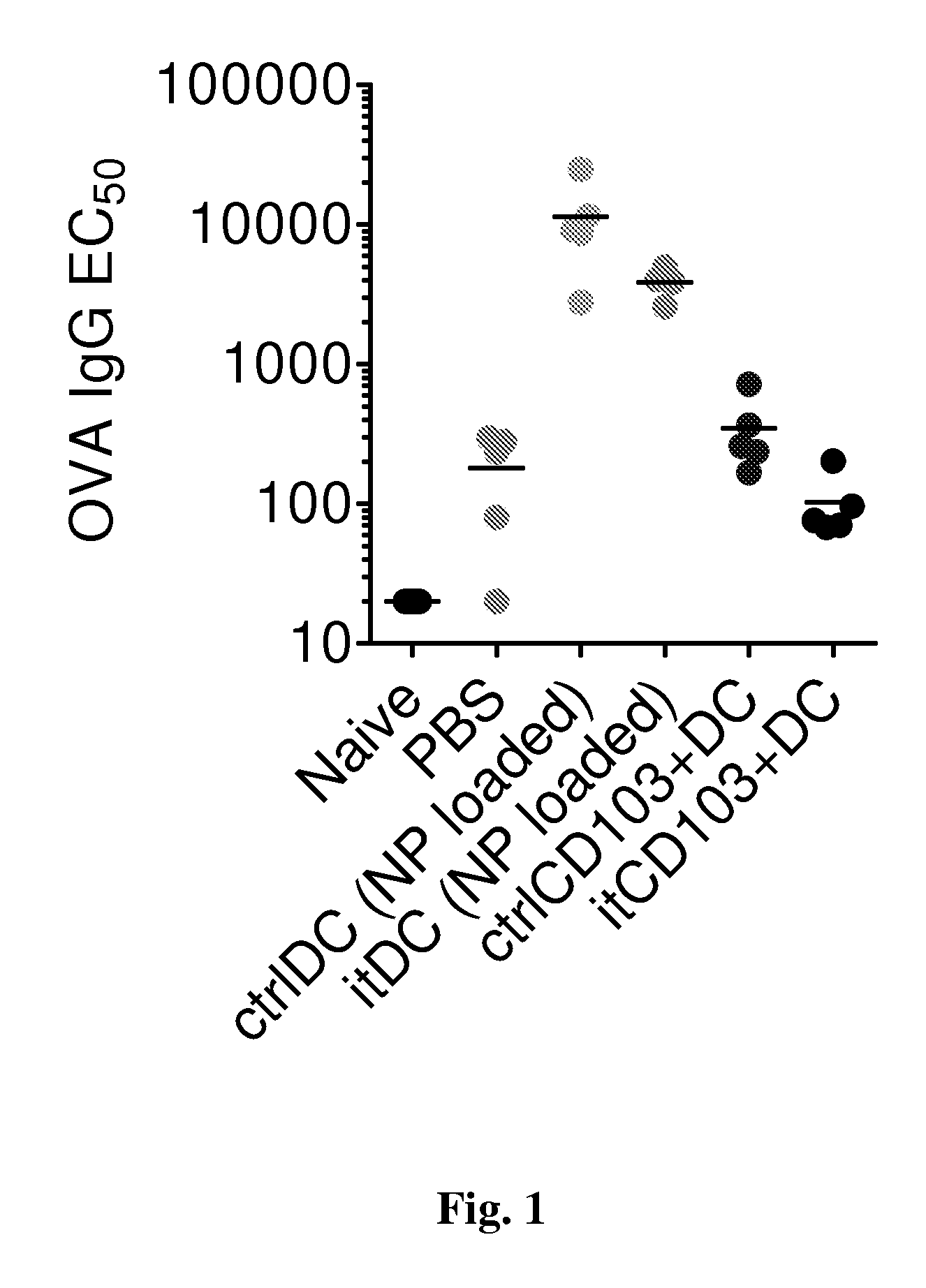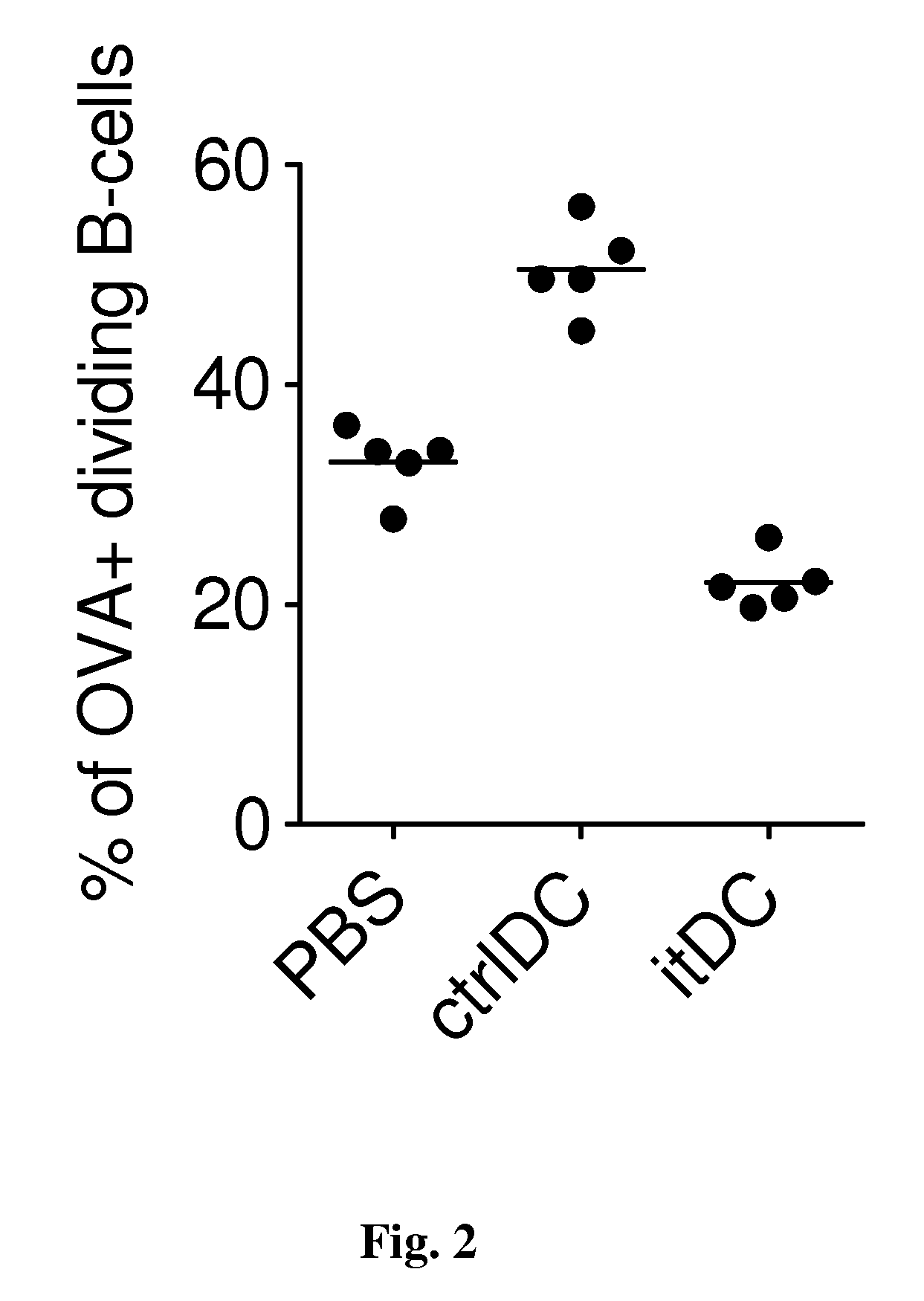Allergen-specific induced tolerogenic dendritic cells for allergy therapy
a technology of dendritic cells and allergens, which is applied in the field of allergen-specific induced tolerogenic dendritic cells for allergy therapy to achieve the effects of reducing an allergic response to an allergen, and reducing an allergic respons
- Summary
- Abstract
- Description
- Claims
- Application Information
AI Technical Summary
Benefits of technology
Problems solved by technology
Method used
Image
Examples
example 1
Isolation of a Starting Population of Cells (Prophetic)
[0208]Starting populations are obtained from the bone marrow, the peripheral blood, or the spleen of a donor subject. In case of solid tissue being harvested or obtained from a subject, the tissue is digested or mechanically disrupted in order to obtain a cell suspension, for example, a single-cell suspension. In case of bone marrow or peripheral blood, the cells are separated from the non-cellular components and undesired cells, e.g., erythrocytes, B-lymphocytes and granulocytes are depleted. Bone marrow and peripheral blood cell populations are depleted of erythrocytes by hypotonic lysis. Erythroid precursors, B lymphocytes, T-lymphocytes, and granulocytes are removed by immunomagnetic bead depletion.
[0209]The obtained cell populations are enriched for dendritic cells and / or dendritic cell precursors by cell sorting for CD11c. For cell sorting, FACS or MACS are used in combination with a CD11c-antibody or CD11c immunomagnetic ...
example 2
Induction of itDCs (Prophetic)
[0210]Starting populations of dendritic cells or dendritic precursor cells are contacted with a tolerogenic stimulus, here, with the mTOR inhibitor rapamycin and TGFβ at 10 ng / ml each for 1 h. An appropriate volume of a concentrated stock solution (e.g., 1000×) of each agent is added to the supernatant of the culture of the starting population to achieve the desired end concentration of the agent in the tissue culture medium. After the contacting time period has elapsed, cells are washed three times with PBS and transferred to culture medium not containing the tolerogenic stimulus. Respirostatic characteristics of the tolerogenic induction is monitored by assessing O2 consumption of the cell populations.
[0211]For DC precursors after seven days in culture, tolerogenic characteristics of the DCs is assessed by contacting a population of naïve T cells with some of the DCs generated and measuring induction of FoxP3 in the naïve T cells, wherein cell populat...
example 3
Antigen-Loading of itDCs (Prophetic)
[0212]Cultures of itDCs are contacted with an antigen of interest, for example, by contacting the itDCs with Der P1 antigen preparation. The itDCs are contacted with the antigen for 24 h at 37° C., and subsequently washed three times in PBS. Antigen-loaded itDCs are then cultured, or used according to methods described herein.
PUM
| Property | Measurement | Unit |
|---|---|---|
| time | aaaaa | aaaaa |
| time | aaaaa | aaaaa |
| time | aaaaa | aaaaa |
Abstract
Description
Claims
Application Information
 Login to View More
Login to View More - R&D
- Intellectual Property
- Life Sciences
- Materials
- Tech Scout
- Unparalleled Data Quality
- Higher Quality Content
- 60% Fewer Hallucinations
Browse by: Latest US Patents, China's latest patents, Technical Efficacy Thesaurus, Application Domain, Technology Topic, Popular Technical Reports.
© 2025 PatSnap. All rights reserved.Legal|Privacy policy|Modern Slavery Act Transparency Statement|Sitemap|About US| Contact US: help@patsnap.com


